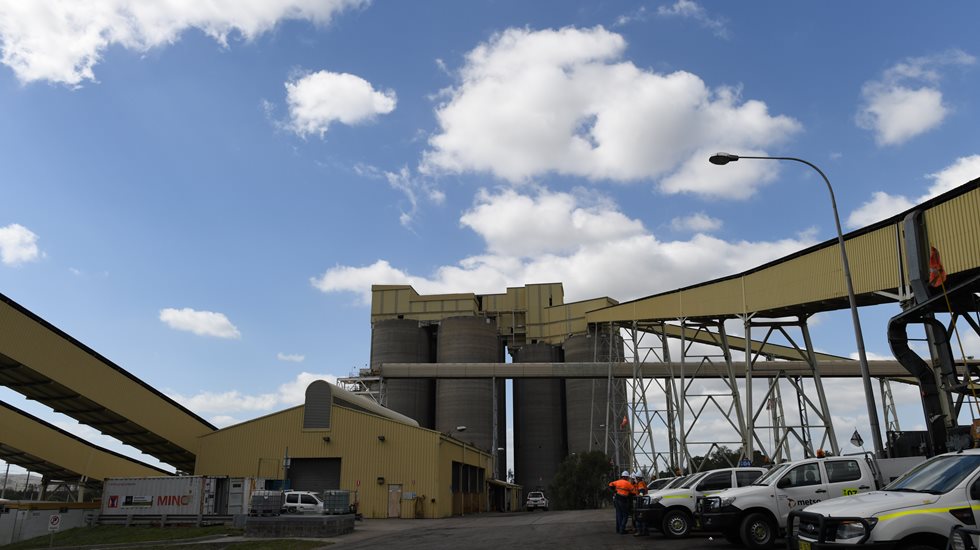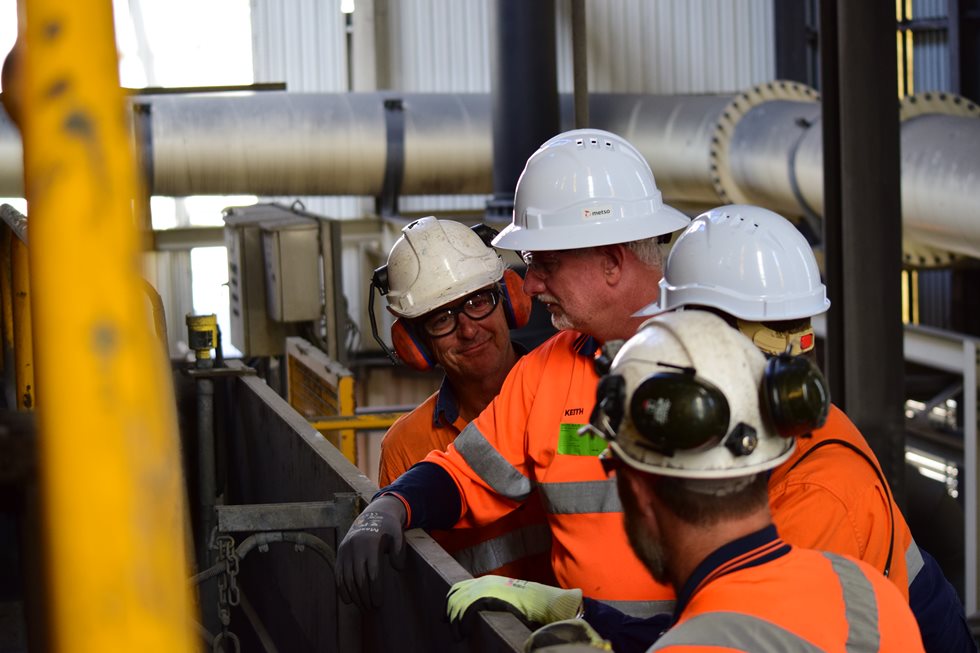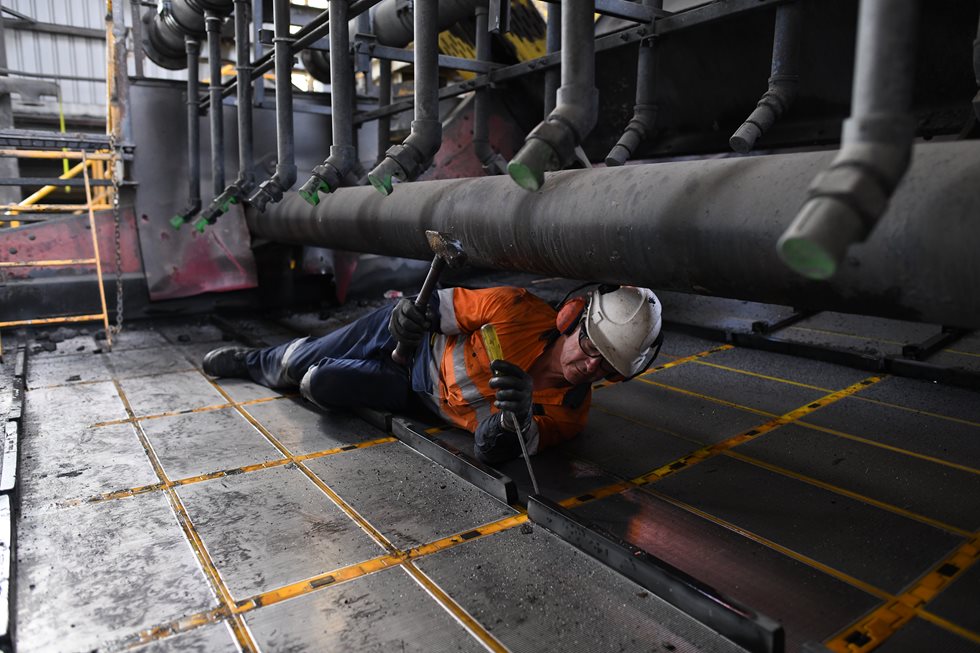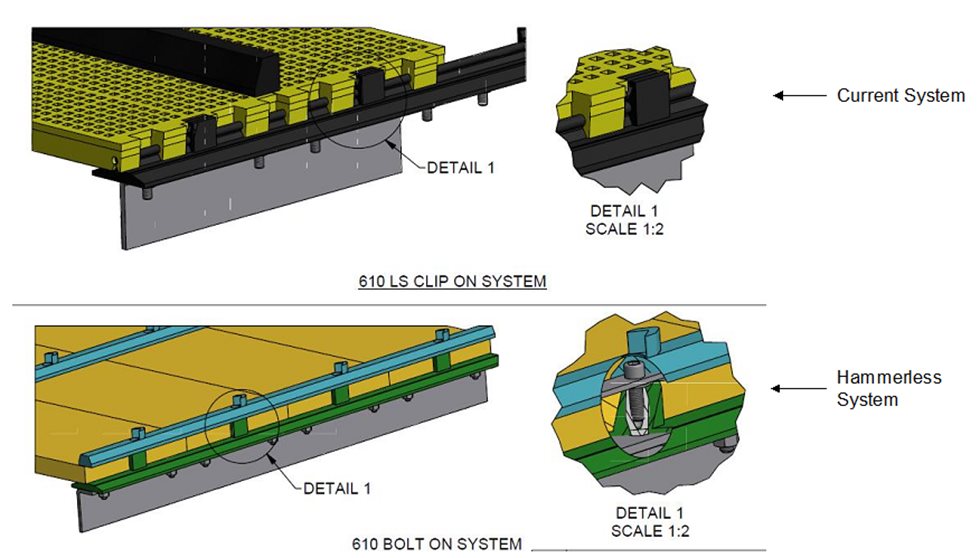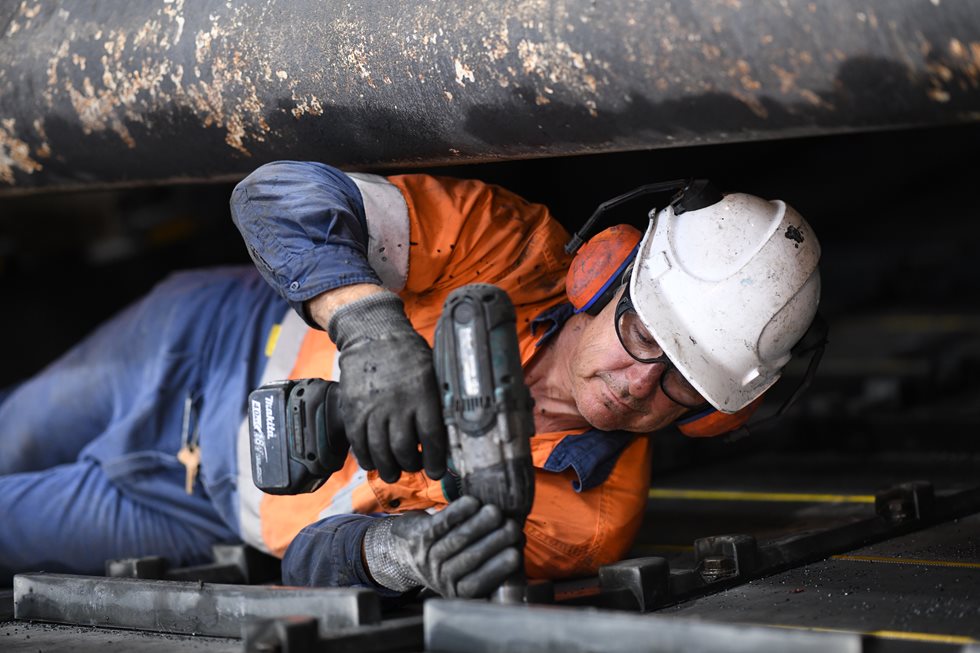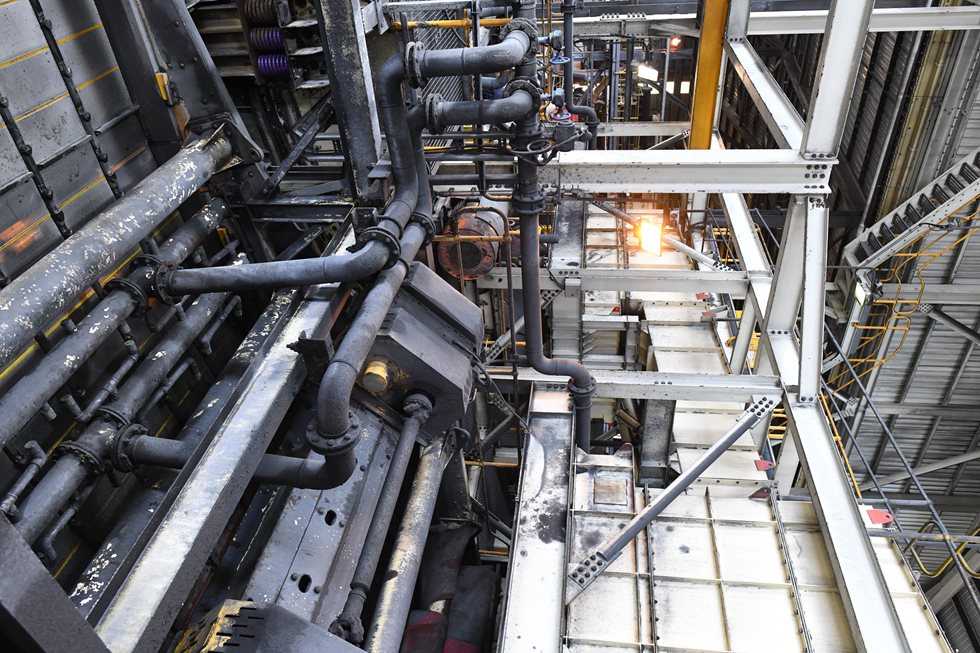Hammers a major risk
Due to the hands-on nature of much of the maintenance work in industrial facilities such as coal preparation plants, hand injuries are the most common injury encountered, and of these a significant proportion comes from the use of hammers.
As a result, senior management at Glencore set a challenge, beginning at CHPPs, to eliminate the use of hammers at all of its facilities. Phil Enderby took on the challenge.
“It is no mean feat to eliminate the use of hammers,” he said. “It’s a big challenge because hammers are used everywhere. Where was one of our biggest risk with hammers? Maintaining the screen media. When you look at the positions the guys are in – using hammers when maintaining the screens – you can see that there are significant safety risks.”
The importance of the screens
Because the raw coal from the mine contains impurities such as sand and rock, and often has a significant variability in terms of size, it must be washed and crushed to product specification. Screens play an important role in grading (size separation) and dewatering the coal.
“At the end of the day, in coal preparation screening is very important,” said Enderby. “We have 22 screens here. If they are not working efficiently and effectively, product can be misplaced to reject and vice versa, affecting yield, product quality and revenue, so it is very important that every screen is doing its job.”
The screens in use at the Ravensworth CHPP range in size from 4.2 m wide by 7 m long, down to smaller machines 1.8 m wide. Each screen has decks made up of removable screening media panels 300 x 600 mm in size.
Screen maintenance is currently scheduled every two weeks. Technicians are required to get onto the screen decks to examine every single screen panel and assess the aperture size. The panels are replaced according to the wear of the apertures so that Ravensworth can optimize the life of the panels without compromising screening efficiency. The maintenance involves from six to eight people every maintenance day, and can take between eight and ten hours to complete. If the panels are not checked correctly, there is a chance of panel failure in the following two weeks, causing poor efficiency, lower plant yield and plant downtime.
Ergonomics and safety risk
The removal and replacement of screen panels typically involves the use of a 3lb (1.25kg) hammer to drive the tip of a demolition screwdriver between panels to lever them out, thus allowing technicians to clean, inspect and replace them. Panels are then hammered back into place. All this is done while the technician is lying in narrow areas on the screen deck. Ergonomically, the job is quite challenging and physically exertive.
“The biggest problem is the ergonomics of crawling around in a small space over the screen deck,” said Enderby. “The risk is associated with the use of hammers and other tools in an awkward position.”
